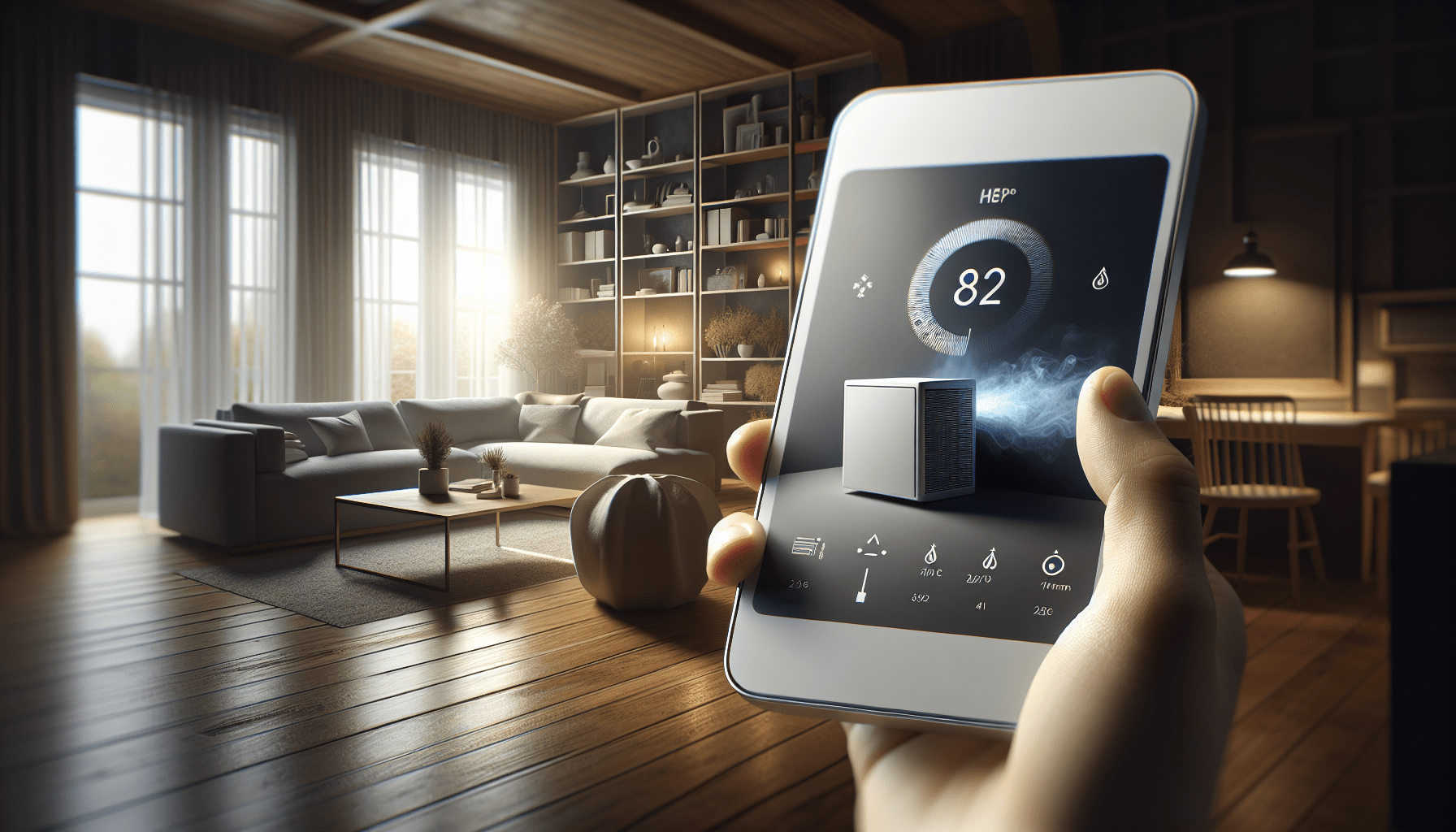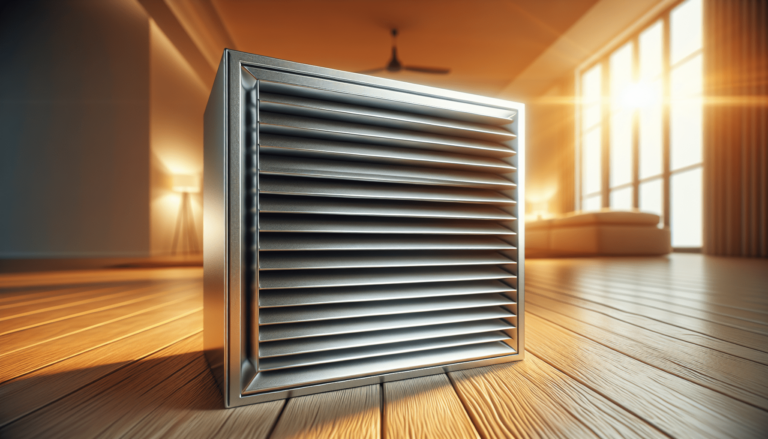

HVAC Services
Get Professional Repairs From The Area's Trusted HVAC Technicians. Ask About Our Services! We Offer Professional Heating & Cooling System Repairs And Guarantee Long-Lasting Results.
Got Question? Call us: (850) 678-2665Financing
The Relationship Between HVAC And Home Humidity
Explore the complex dance between HVAC systems and home humidity. Discover how this relationship is key to maintaining comfort and health indoors.

What do you think about when you step into your home and savor the comfort of the perfect temperature? Most likely, you’re not considering the complex dance happening between your HVAC system and your home’s humidity levels. However, understanding this relationship is vital for maintaining a comfortable and healthy living environment. Let’s embark on this journey together and unravel the dynamic partnership between HVAC systems and home humidity.
Understanding HVAC Systems
Your HVAC system, a trusty guardian of domestic comfort, works tirelessly to control temperature and improve air quality. It includes components for heating, ventilation, and air conditioning. While it’s easy to associate it primarily with temperature control, your HVAC system plays an equally crucial role in managing humidity levels, ensuring the air inside your home is just right.
Components of an HVAC System
To appreciate how your HVAC system affects humidity, you first need to understand its main components. These include the furnace, air conditioner, thermostat, ductwork, and ventilation. Each component has a specific function, and together, they help maintain the indoor climate.
The Role in Temperature and Humidity Control
Though the HVAC system’s primary function is to regulate temperature, it also influences relative humidity levels inside your home. Both temperature and humidity significantly impact comfort and health, making their regulation essential for any household.
What is Humidity?
Humidity, in simple terms, is the amount of moisture in the air. It can vary dramatically, influenced by numerous factors like temperature, weather, and geographical location. Understanding humidity is crucial, especially when trying to achieve comfort in your home.
Relative Humidity Explained
Relative humidity is the percentage of moisture in the air compared to what the air can hold at a particular temperature. High relative humidity means the air is saturated with moisture, while low relative humidity means the air is dry. Properly managing this balance is key to creating a comfortable environment.
Impact of Humidity on Comfort and Health
Humidity levels influence how we perceive temperature. High humidity makes it feel warmer than it actually is, while low humidity can make the air feel cooler. Beyond comfort, humidity levels also affect health by impacting respiratory health and skin condition. Therefore, maintaining optimal humidity is essential.

How HVAC Systems Affect Home Humidity
The interplay between your HVAC system and home humidity is continuous and complex. Each component of the system contributes differently to humidity control, ensuring your indoor environment remains comfortable and healthy.
Air Conditioners and Dehumidification
Air conditioners do more than just cool the air. During the cooling process, they extract excess moisture, acting as natural dehumidifiers. They reduce indoor humidity levels, creating a more comfortable and less sticky environment.
Humidifiers and Dry Climates
In contrast, if you live in an arid climate, the air inside your home can become too dry. Here, humidifiers come into play, adding moisture back into the air. They help maintain optimal humidity levels, preventing issues like dry skin and irritated respiratory systems.
Ventilation’s Role in Humidity Regulation
Good ventilation is critical for controlling humidity, as it removes stale, moisture-laden air, replacing it with fresh outside air. This exchange helps maintain balanced humidity levels, resulting in better air quality and comfort inside your home.
Finding the Optimal Humidity Level
The ideal relative humidity for most homes lies between 30-50%. However, this can vary based on personal comfort preferences and specific circumstances. Understanding how to achieve and maintain this balance is vital for your comfort and health.
Seasonal Impacts on Humidity
Different seasons bring unique humidity challenges. Summers often require more dehumidification, owing to higher natural humidity levels, while winters might necessitate adding humidity to combat the drying effects of heating systems.
Tools for Measuring Humidity
To keep track of indoor humidity levels, hygrometers can be very helpful. These devices measure the moisture content of the air, providing real-time insights into your home’s humidity levels and helping you make necessary adjustments.

HVAC Maintenance and Humidity Control
Maintaining your HVAC system is critical not just for temperature control but also for effective humidity regulation. Proper maintenance ensures that all components are working optimally, enhancing the system’s ability to manage humidity.
Importance of Regular HVAC Check-ups
Regular inspections help identify issues that may affect humidity control, like faulty humidifiers or clogged filters. Keeping your system in top condition helps prevent problems and maintain a comfortable indoor climate.
Cleaning and Replacing Filters
Clogged filters can hinder airflow, affecting both temperature control and humidity levels. Regular cleaning and replacement of filters ensure your system runs efficiently and effectively manages both temperature and humidity.
Tips for Managing Home Humidity
Effectively controlling home humidity goes beyond relying solely on your HVAC system. It also includes implementing additional strategies and practices designed to enhance your home’s comfort and health.
Using Additional Dehumidifiers or Humidifiers
In some cases, standalone dehumidifiers or humidifiers can provide extra support in achieving desired humidity levels. These units can target specific areas, giving you greater control over your home’s humidity balance.
Sealing Leaks and Improving Insulation
Air leaks can introduce unwanted moisture into your home. By sealing leaks and improving insulation, you can better manage indoor humidity and enhance overall comfort and energy efficiency.
Houseplants as Natural Humidifiers
Certain houseplants can naturally regulate humidity by releasing moisture into the air. These plants not only help maintain humidity levels but also improve indoor air quality, making them a healthy addition to any home.
Conclusion
Recognizing and understanding the relationship between your HVAC system and home humidity is essential for creating a comfortable living environment. It involves a balance of proper HVAC maintenance, understanding seasonal changes, and implementing additional humidity control strategies. By taking these steps, you can enjoy a consistently comfortable, healthy, and energy-efficient home environment.
If you’re looking for professional HVAC assistance or advice, Tempacure Heating and Air Conditioning is here to help. With personalized solutions to fit your individual needs, their knowledgeable team is ready to assist you in optimizing your home’s temperature and humidity levels.
For further inquiries, reach them at:
Tempacure Heating and Air Conditioning
325 Cedar Ave S, Suite B
Niceville, FL 32578
(850) 678-2665
Tempacure HVAC Website
Your journey towards achieving perfect home comfort begins with understanding and maintaining the delicate balance of temperature and humidity—let Tempacure be your trusted partner in this endeavor!







